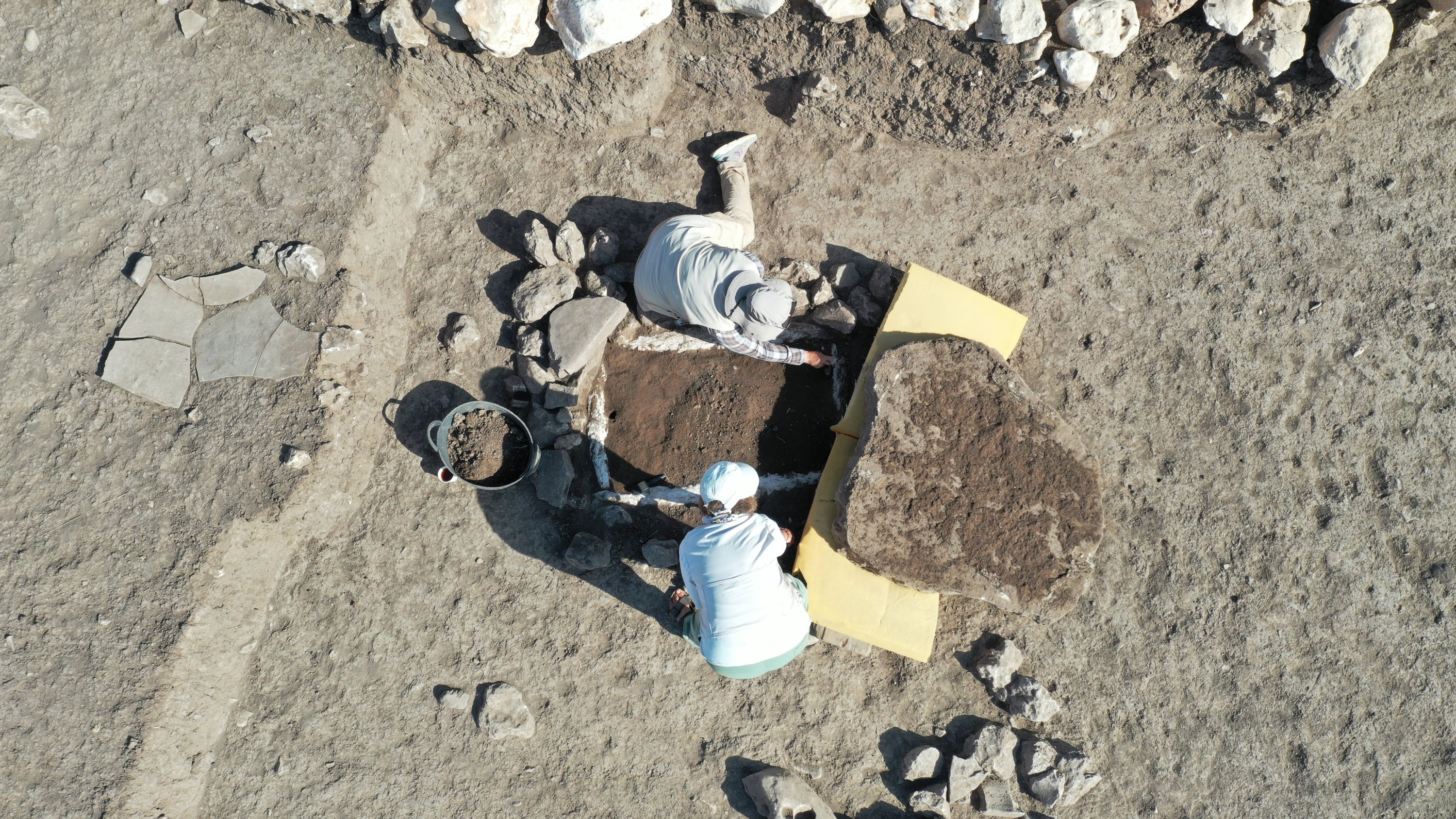© Turkuvaz Haberleşme ve Yayıncılık 2024
The Neolithic settlement in the northern Ergani district of Türkiye southeastern province of Diyarbakır, Çayönü Hill, revealed many cistvaens, a tomb or burial chambers formed from flat stone slabs in a box-like shape, during the excavations carried out in the historical site.
Bearing the first traces of the Neolithic Age, when agricultural activities and the transition from nomadism to settled life started, three more important cist graves that will shed light on history were found at Çayönü Hill. Archeologists claim that graves are a continuation of the 5,000-year-old cist grave found last year.
The mound, which is among the places from hunting and gathering to production, is of great importance not only for the region's history but also for the history of world civilization, as it is dated about 10,000 years ago.
Archaeological excavations started in 1964 but were interrupted in 1991 for security reasons and restarted seven years ago. Now, Çanakkale Onsekiz Mart University Archeology Department Head Aslı Erim Özdoğan leads the excavations conducted in the area. The tomb, which is now filled with soil, will be examined in the presence of an anthropologist and dated according to the materials inside.
Stating that one of the tombs is very worn down, and thus it is too early to give historical information about the third tomb, Özdoğan said: "Compared to last year, we expanded the excavation area a bit. Now we are working in two different historical time periods, namely the Pottery Neolithic and the Early Bronze Age. Last year, we found a building pertaining to the third millennium and some of its annexes. We had been searching for it for years."
After recovering the burial gifts when the tomb is opened, the team will move on to the dating stage. "We think that it will not last less than 10 days. The tradition of cist graves is actually a phenomenon that we encounter throughout northern Mesopotamia. There are also older settlements," she added.
"It is anthropologically important that we have the tomb intact. Since there is not much interference from the outside, it will probably allow DNA analysis. It is also important in terms of showing that the objects inside of the tomb were not interfered with in any way from the outside. We thought it was a kind of guarantee that both the archaeological and the anthropological material could survive to the present day thanks to the burial type," Özdoğan said.

"Another importance of Çayönü Hill is that, according to our knowledge, they processed the first copper through a basic technology. By heating and hammering, they usually made beads during that period. However, what makes Çayönü exceptional is that it is the place where copper is taken, used, processed and introduced to the world. It is important from an anthropological point of view," she added.
The lid of the largest of the tombs was opened by the expert team on Wednesday. It was discovered that the grave was strengthened with earth filling. The filling, which was built to protect the corpse in the tomb, was carefully swept and examined by anthropologists and archaeologists.
